Welcome to the Sky Rover Helicopter guide! This manual provides essential information for safe and effective operation. Learn about setup‚ controls‚ and maintenance to maximize your flying experience. Follow these instructions carefully for optimal performance and troubleshooting.
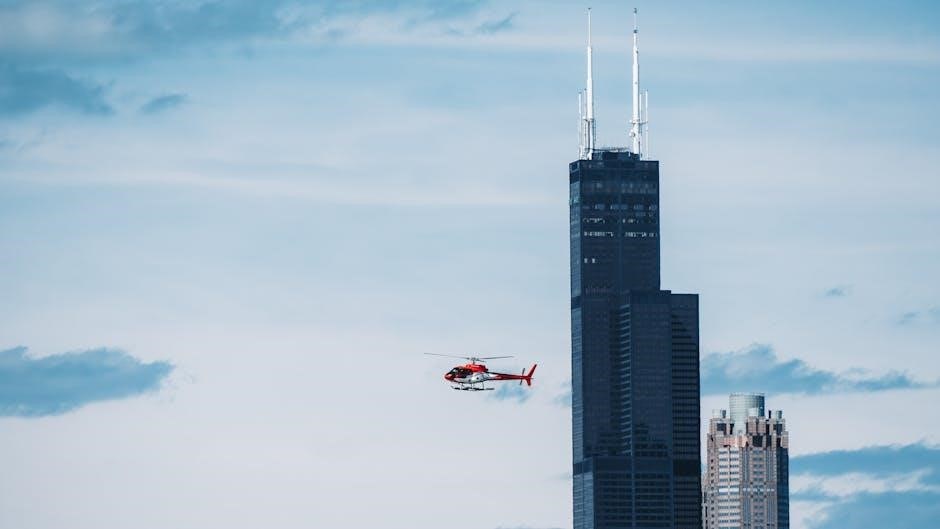
Importance of the User Manual
The user manual is crucial for understanding the Sky Rover Helicopter’s operation‚ safety‚ and maintenance. It provides detailed instructions‚ troubleshooting tips‚ and essential guidelines to ensure a safe and enjoyable flying experience. Always refer to it for proper usage and compliance with regulations.
2.1 FCC ID and Documentation Details
The Sky Rover Helicopter is assigned specific FCC IDs‚ such as 2AIRP-858952 and VVA85714000001‚ ensuring compliance with federal regulations. These IDs verify the device’s certification for safe operation in the United States. The user manual includes detailed documentation‚ such as technical specifications‚ safety guidelines‚ and operational instructions. Proper documentation ensures users understand compliance requirements and can troubleshoot issues effectively. Always refer to the provided manual for accurate information on FCC regulations and device certification. Keep the manual handy for future reference and compliance checks. For additional details‚ visit the manufacturer’s website or consult the FCC database. Proper documentation is essential for both legal compliance and optimal performance of the Sky Rover Helicopter.
2.2 Contents and Safety Precautions
The Sky Rover Helicopter user manual includes a detailed list of contents and essential safety precautions to ensure safe and enjoyable operation. Upon opening the manual‚ users will find a comprehensive overview of the helicopter’s components‚ including the main rotor‚ tail rotor‚ transmitter‚ and battery. Additionally‚ the manual outlines the accessories provided‚ such as the charger‚ spare parts‚ and instruction guide.
Safety precautions are a critical section of the manual. Users are advised to handle the helicopter with care‚ as its rotating blades and high-speed components can cause injury. It is recommended to avoid flying near people or obstacles and to ensure the helicopter is operated in an open‚ safe environment. The manual also emphasizes the importance of adult supervision during charging and operation‚ especially when minors are involved.
Before the first use‚ users are encouraged to thoroughly read the manual to understand the helicopter’s functionality and limitations. Proper adherence to the safety guidelines ensures a smooth and risk-free flying experience. Always keep the manual handy for quick reference and troubleshooting. By following these precautions‚ users can maximize their enjoyment of the Sky Rover Helicopter while minimizing potential risks.
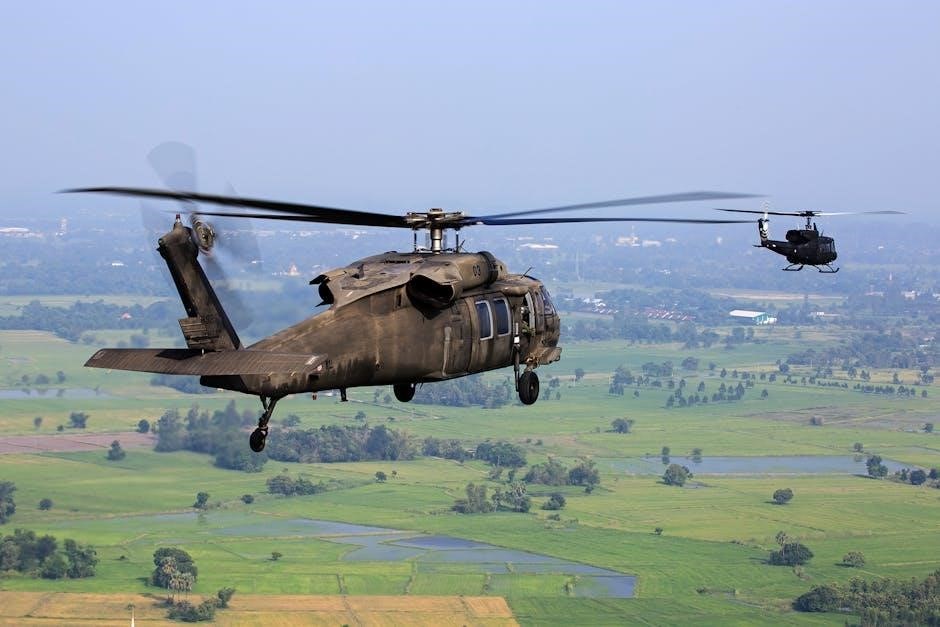
2.3 Initial Setup and Configuration
The initial setup of the Sky Rover Helicopter is a straightforward process that ensures proper functionality and safety. Begin by carefully unpacking the helicopter and its accessories‚ including the transmitter‚ battery‚ charger‚ and instruction manual. Before powering on the device‚ inspect all components for damage or defects.
Next‚ insert the batteries into the transmitter and ensure they are securely fitted. The helicopter’s power switch should remain in the OFF position until the setup is complete. Connect the battery to the helicopter‚ following the manual’s wiring diagram to avoid short circuits.
Once the battery is connected‚ turn on the transmitter and the helicopter’s power switch. The system will enter binding mode‚ indicated by flashing LEDs on the receiver. This process establishes communication between the transmitter and the helicopter. Allow the binding process to complete before moving on to calibration.
For optimal performance‚ calibrate the helicopter’s gyro system on a flat‚ stable surface. Ensure the throttle stick is in the neutral position and follow the manual’s calibration steps. Proper setup and configuration are essential for smooth operation and safety. Always refer to the manual for specific instructions tailored to your Sky Rover model.

Basic Components of the Sky Rover Helicopter
The Sky Rover Helicopter consists of a lightweight‚ durable frame‚ a high-efficiency motor‚ and a responsive remote transmitter. It includes a rechargeable battery‚ a charger‚ and essential accessories like spare rotors and a stabilizer. The transmitter operates on 2.4GHz frequency for reliable control.
3.1 Helicopter and Transmitter Overview
The Sky Rover Helicopter is designed for stability and agility‚ featuring a lightweight yet durable frame. Its high-efficiency motor ensures smooth operation‚ while the main rotor and tail rotor provide precise control. The transmitter operates on a 2.4GHz frequency‚ offering a reliable connection and minimal interference.
The helicopter includes a rechargeable battery‚ a power switch‚ and a battery compartment for easy access. The transmitter is equipped with joysticks for throttle and directional control‚ along with trim buttons to fine-tune performance. LED indicators on the transmitter provide status updates‚ ensuring optimal operation.
Both the helicopter and transmitter are built with user-friendly design principles‚ making them accessible to pilots of all skill levels. The transmitter’s ergonomic layout and responsive controls enhance the flying experience‚ while the helicopter’s compact size allows for versatile use in various environments. This combination ensures a seamless and enjoyable operation for hobbyists and enthusiasts alike.
3.2 Battery‚ Charger‚ and Accessories
The Sky Rover Helicopter is powered by a high-capacity lithium-polymer (LiPo) battery‚ designed for extended flight times and reliable performance. The included charger is equipped with safety features such as overcharge protection and an LED indicator to monitor charging status.
Additional accessories include spare rotor blades‚ a USB charging cable‚ and a detailed instruction manual. These components ensure that you can maintain and upgrade your helicopter with ease. Proper care of the battery is crucial; always store it in a cool‚ dry place and avoid extreme temperatures.
The charger is user-friendly‚ with clear indicators for charging progress. When the battery is fully charged‚ the LED will change color‚ signaling it’s ready for use. Accessories like replacement parts allow you to keep your helicopter in top condition‚ while the manual provides troubleshooting tips and maintenance advice. By following the guidelines‚ you can maximize the lifespan of your battery and ensure safe operation. This comprehensive set of components makes the Sky Rover Helicopter a convenient and durable choice for enthusiasts.

Preparing for Flight
Before flying your Sky Rover Helicopter‚ ensure all components are secure and functioning properly. Conduct a pre-flight inspection‚ charge the battery fully‚ and calibrate the gyro for stability. Choose a safe‚ open area for takeoff and practice. Always prioritize safety and proper preparation.
4.1 Pre-Flight Checks and Safety
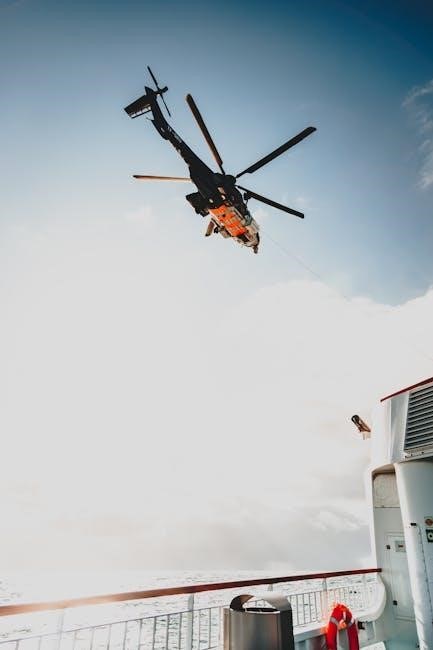
Before each flight‚ perform a thorough pre-flight inspection to ensure the Sky Rover Helicopter is in optimal condition. Start by examining the main rotor and tail rotor for damage or imbalance. Verify that all screws and components are securely tightened. Check the battery level and ensure it is fully charged. Inspect the transmitter for proper functionality and ensure all controls are responsive.
Choose a safe‚ open flying area free from obstacles‚ people‚ and animals. Avoid flying near power lines or in windy conditions. Always maintain a clear line of sight with the helicopter to ensure proper control. Follow local aviation regulations and safety guidelines.
Adult supervision is required when charging the battery or operating the helicopter‚ especially for novice pilots. Keep the helicopter away from flammable materials and ensure the area is clear of any hazards. Failure to perform these checks can lead to accidents or damage to the helicopter. Always refer to the user manual for specific instructions and troubleshooting tips. Safety should never be compromised during any phase of operation.
4.2 Charging the Battery and Gyro Calibration
Charging the battery correctly is essential for the Sky Rover Helicopter’s performance. Use the provided charger and ensure the battery is placed on a stable‚ non-flammable surface. Avoid overcharging‚ as this can damage the Li-po battery. Connect the battery to the charger and wait for the indicator to show a full charge. Once charged‚ unplug it immediately to prevent overheating.
Before your first flight‚ calibrate the gyro to ensure stable operation. Place the helicopter on a flat‚ level surface and turn on the transmitter. Follow the manual’s calibration steps‚ usually involving moving the cyclic sticks to their extreme positions and centering them. This process ensures the gyro aligns with the helicopter’s orientation.
Proper calibration is critical for maintaining balance and responsiveness during flight. If the helicopter drifts or vibrates excessively‚ recalibrate the gyro. Always refer to the user manual for specific calibration instructions‚ as improper calibration can lead to poor stability and control issues. Regularly check the battery’s health and charging patterns to extend its lifespan.
4.4 Choosing a Safe Flying Location
Selecting a safe and suitable location for flying your Sky Rover Helicopter is crucial for a successful and enjoyable experience. Always opt for an open‚ flat area with minimal obstacles‚ such as a park or empty field. Avoid flying near trees‚ power lines‚ buildings‚ or crowded spaces to reduce the risk of collisions or accidents.
Ensure the area is free from overhead obstructions and provides enough clearance for the helicopter to maneuver safely. Weather conditions are also important—avoid flying in strong winds‚ rain‚ or extreme temperatures‚ as these can affect performance and stability.
Check local regulations and ensure you are not flying in restricted areas‚ such as near airports or sensitive landmarks. Additionally‚ choose a location with good visibility to maintain control of the helicopter at all times.
Always keep bystanders and pets at a safe distance to prevent potential hazards. By carefully selecting your flying location‚ you can minimize risks and enjoy a smooth‚ incident-free flight with your Sky Rover Helicopter.
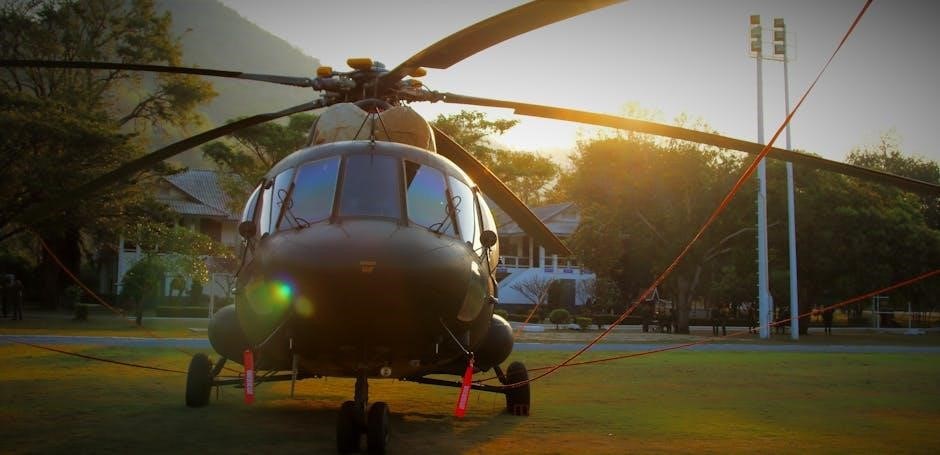
Understanding Control Functions
Mastering the control functions of your Sky Rover Helicopter is key to precise flight operations. The throttle stick adjusts altitude‚ while the cyclic stick controls direction and tilt. The tail rotor ensures stability‚ and additional features like voice commands enhance control.
5.1 Throttle and Cyclic Controls
The throttle and cyclic controls are essential for managing your Sky Rover Helicopter’s movement. The throttle stick‚ located on the left side of the transmitter‚ adjusts the helicopter’s altitude by controlling the main rotor’s speed. Pushing the throttle up increases power‚ making the helicopter ascend‚ while pulling it down reduces power‚ causing it to descend.
The cyclic stick‚ situated on the right side‚ controls the direction and tilt of the helicopter. Moving it forward‚ backward‚ left‚ or right changes the angle of the main rotor blades‚ allowing the helicopter to move in the desired direction. Coordinating the throttle and cyclic sticks is crucial for smooth and precise flight.
For beginners‚ it’s important to start with low throttle settings to avoid sudden movements. Gradually increase the throttle as you gain confidence. Always ensure the helicopter is on a flat surface during takeoff and landing to maintain stability. Practice hovering at a low altitude to get accustomed to the controls before attempting advanced maneuvers. Proper use of these controls will enhance your flying experience and ensure safe operations.
5.2 Tail Rotor and Remote Functions
The tail rotor plays a critical role in stabilizing the Sky Rover Helicopter during flight by countering the torque generated by the main rotor. The remote control’s right stick manages the tail rotor‚ allowing you to adjust the helicopter’s yaw (rotation); Moving the stick left or right will turn the helicopter in the corresponding direction.
The remote also features various functions to enhance your flying experience. The power button powers on the transmitter‚ while the trim buttons fine-tune the helicopter’s balance during flight. The LED indicator on the remote provides feedback on the connection status between the transmitter and the helicopter.
To ensure smooth operation‚ always bind the helicopter and remote according to the manual before each flight. The remote’s ergonomic design allows for precise control‚ making it easier to maneuver the helicopter. For advanced users‚ the remote can be adjusted to customize sensitivity and response. Regularly check the tail rotor and remote for proper function to maintain optimal performance and safety. Proper use of these features will help you achieve better control and stability during flight.
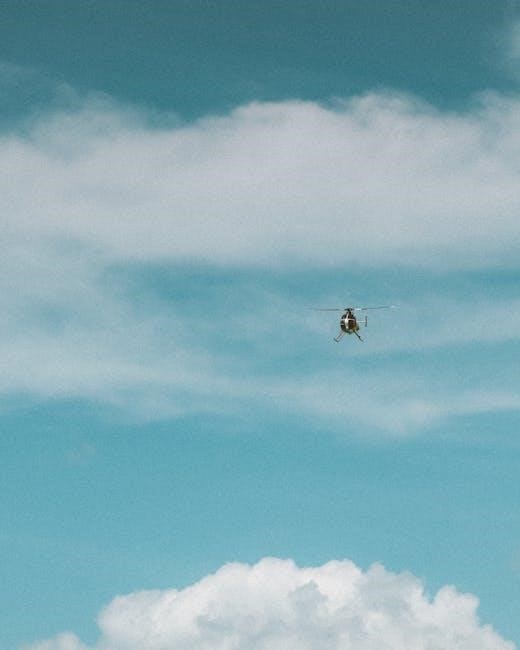
Mastering Basic Flight Operations
Mastering basic flight operations is crucial for safe and enjoyable flying. Start with pre-flight checks‚ then gradually learn takeoff‚ hovering‚ and landing techniques. Practice throttle and cyclic controls to maintain stability. Always prioritize safety and follow the manual’s guidance for smooth operations.
6.1 Takeoff and Initial Ascent
The takeoff and initial ascent are critical steps in mastering the Sky Rover Helicopter. Begin by ensuring the helicopter is on a flat‚ stable surface in an open area. Power on the transmitter and helicopter‚ ensuring the throttle is at zero. Gradually increase the throttle while maintaining steady control with the cyclic stick. As the helicopter lifts off‚ focus on achieving a smooth‚ vertical ascent. Avoid sudden movements to prevent instability.
Once airborne‚ stabilize the helicopter at a low altitude (around 3-5 feet) to practice hovering before proceeding higher. Use the cyclic controls to adjust the nose direction and maintain balance. The tail rotor will help counteract any unwanted spins. Ensure the helicopter responds evenly to control inputs‚ making adjustments as needed.
During the initial ascent‚ monitor the battery level and watch for any signs of instability. If the helicopter wobbles‚ reduce the throttle slightly and regain control. Always keep the helicopter in your line of sight and avoid obstacles; Practice these steps repeatedly to build confidence and precision. Refer to the manual for specific throttle calibration and control sensitivity settings. By mastering takeoff and ascent‚ you’ll lay a solid foundation for more advanced maneuvers.
6.2 Hovering and Stability Techniques
Mastering hovering and stability is essential for controlling the Sky Rover Helicopter effectively. To enter a hover‚ slowly increase the throttle while gently adjusting the cyclic stick to maintain a steady altitude. Ensure the helicopter remains level by monitoring the tilt of the main rotor blades.
Once hovering‚ focus on maintaining balance by subtle movements of the cyclic and tail rotor controls. The tail rotor helps counteract the main rotor’s torque‚ ensuring the helicopter doesn’t spin. Use the throttle to fine-tune altitude‚ and the cyclic stick to adjust position.
To improve stability‚ practice hovering at a low altitude (around 3-5 feet) in a wind-free area. Sudden movements can destabilize the helicopter‚ so make gradual adjustments. If the helicopter drifts‚ correct its position with gentle cyclic inputs.
For better control‚ ensure the helicopter’s center of gravity is balanced‚ and the battery is securely fastened. Regularly check and adjust the gyro sensitivity as per the manual for optimal stability. Hovering is a foundational skill that will enhance your ability to perform more complex maneuvers. Practice consistently to build confidence and precision.

Advanced Flight Techniques
Take your flying skills to the next level with aerobatic moves like flips and dives. Optimize speed for smoother maneuvers and explore voice command features for hands-free control. Practice these techniques to enhance precision and enjoyment.
7.1 Aerobatic Moves and Speed Optimization
Aerobatic moves add excitement to your Sky Rover Helicopter experience. Master flips‚ dives‚ and sharp turns by refining throttle and cyclic control coordination. For optimal speed‚ adjust the throttle to maintain stability while increasing power gradually. Ensure proper orientation during maneuvers to avoid disorientation. Practice in open spaces to safely execute advanced techniques. Use the remote’s sensitivity settings to fine-tune responsiveness. Voice command features can also enhance control during complex moves. Always refer to the manual for specific calibration tips to achieve the best performance. Patience and practice are key to mastering these advanced flight techniques.
7.2 Using Voice Command Features
The Sky Rover Helicopter’s voice command feature offers a unique and futuristic way to control your device. This innovative technology allows you to issue commands such as “takeoff‚” “land‚” and “hover” through voice recognition. To activate this feature‚ ensure your helicopter is properly paired with your remote and that the voice command mode is enabled. The user manual provides specific phrases and setup instructions. For optimal performance‚ speak clearly and maintain a stable environment to minimize interference. Voice commands can enhance your flying experience‚ offering hands-free control and adding a new level of excitement to your flights. Remember to follow safety guidelines and practice in an open area to ensure smooth operation. This feature is a testament to the Sky Rover’s advanced technology‚ making it a standout in RC helicopters. Regularly update your firmware to improve voice recognition accuracy and functionality. Happy flying with this cutting-edge feature!
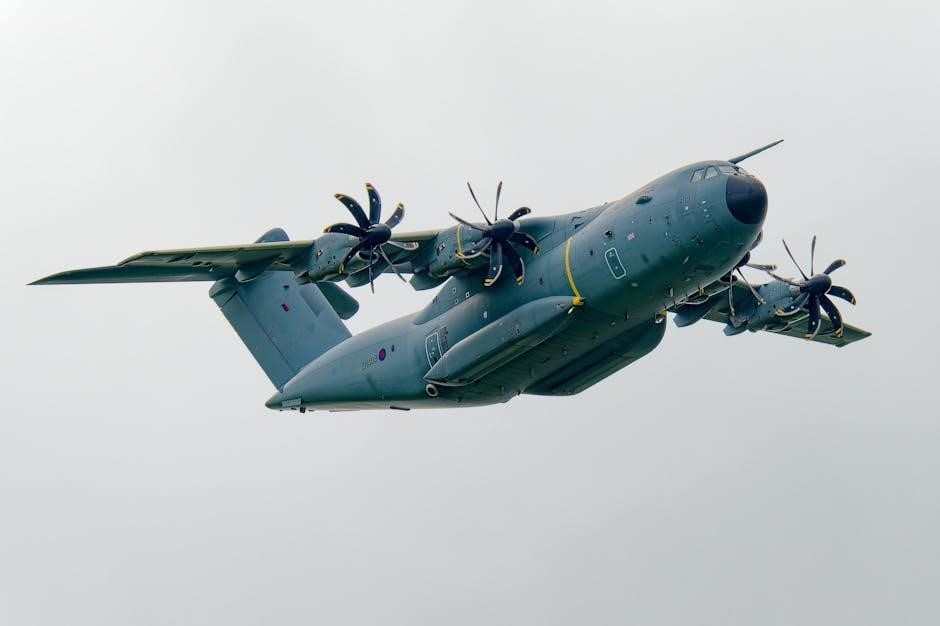
Maintenance and Care
Regular maintenance ensures your Sky Rover Helicopter performs optimally; Clean the helicopter and components with a soft cloth to prevent dust buildup. Store batteries in a cool‚ dry place and avoid overcharging. Check for wear and tear on rotors and gears; Consult the manual for detailed care instructions to extend the lifespan of your device.
8.1 Cleaning and Battery Care
Proper cleaning and battery maintenance are crucial for the longevity of your Sky Rover Helicopter. Use a soft‚ dry cloth to wipe down the helicopter and its components‚ avoiding harsh chemicals or abrasive materials. For the battery‚ ensure it is stored in a cool‚ dry place away from direct sunlight. Avoid overcharging‚ as this can degrade the battery’s performance and lifespan. Always follow the charging instructions provided in the manual‚ and use the original charger to prevent damage. If the helicopter is not in use for an extended period‚ store the battery with a partial charge (around 50%) to maintain its health. Regularly inspect the battery for signs of wear‚ swelling‚ or damage‚ and replace it if necessary. Cleaning the battery terminals with a cotton swab can improve connectivity. By adhering to these care practices‚ you can ensure optimal performance and extend the life of your Sky Rover Helicopter.
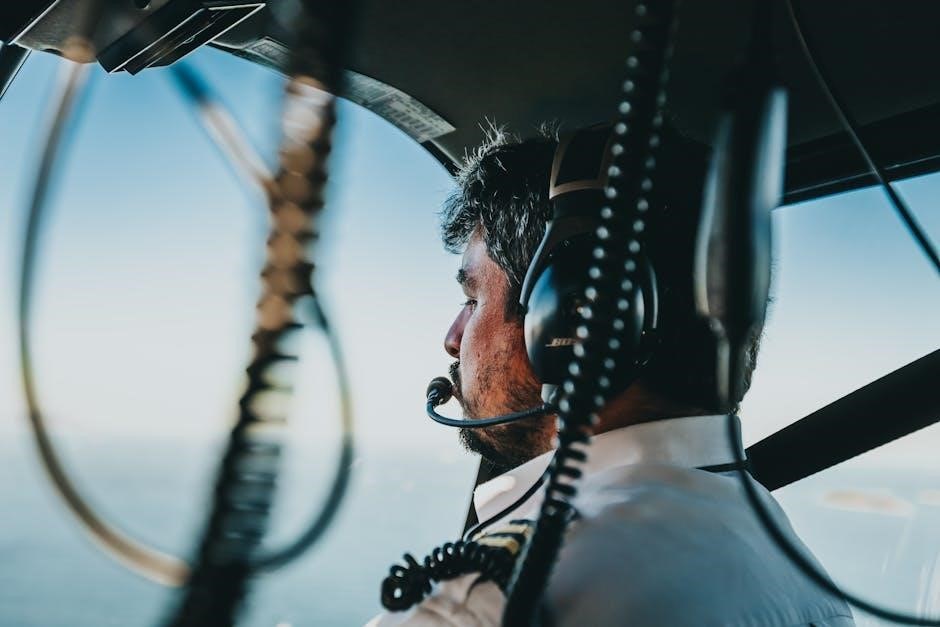
No Responses